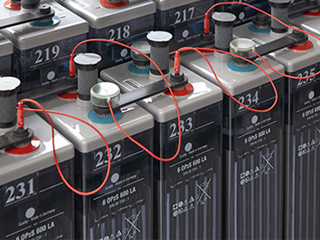There are an estimated 5 million cell towers worldwide, 640,000 of which are off-grid and increasing at a rate of around 50,000 per year as cell tower network infrastructure is rolled out to remote locations in the developing world. The vast majority of these off grid cell tower sites are powered by diesel generators, and additional to these sites many suffer from unreliable grid power and rely on generators to fill the gaps.
This fuel bill is a heavy load to bear for telecoms companies financially and contributes to carbon emissions. In India alone during 2011 telecom tower sites consumed an estimated 3.2 billion liters of diesel fuel. At the current rate of expansion that could reach 6 billion by 2020.
India is currently leading the way in installation and upgrading of off grid sites to use alternative and renewable energy sources. The government in India heavily subsidizes diesel fuel and in an effort to reduce carbon footprint and reduce greenhouse emissions it has been mandated that 50% of rural sites be powered by renewable energy by 2015, and by 2020 75% of rural sites and 33% of urban sites should be switched over to green energy.
There is a financial benefit for the telecom tower operators also. The typical annual running cost for an Indian telecom tower running on diesel generators is $14,510 USD. This can be compared to a cost of $8,215 USD per year for a solar setup with battery backup. Due to increasing fuel costs it is expected by 2020 the annual fuel cost would exceed $20,000 USD, where as if the continued downtrend in the cost of solar technology continues it would fall to less than $5,500 USD. Yes the initial investment in solar panels is higher but it will provide monetary benefit that pays for itself after 4 years, as well as reducing the carbon footprint per tower.
One barrier to entry of solar panels into cell towers is the power requirements of the towers themselves. A cellular base station that comprises of a tower and radio equipment can use anything between 1kW to 5 kW per hour. A large amount of this energy overhead comes from air conditioning equipment, but other factors such as the number of transceivers attached to the base station and the age of the tower have a bearing. A study from Pike Research puts the figure for the majority of towers closer to the 5kW mark. There is now a movement in the electronics industry to begin exploring ways to reduce the power requirements for the electronics equipment used in the base stations, primarily by making them more tolerant to heat, which can therefore lower the air conditioning requirements. Making the towers more energy efficient and lowering the power needs will be a key factor in the adoption of solar and other green energy setups. Alcatel Lucent is integrating energy monitoring capabilities into the cell tower base stations. The data from which can then be used to optimize power use.
Out of all renewable and green energy sources solar power dominates the cellular tower market. Some sites in India are using aggregated technology combining solar and wind together, using fuel cells or bio-CNG digesters. By 2015 India telecom operators will have 80,000 sites running on renewable energy sources.
The research and development of green power for cell towers in India will have it’s greatest impact on the African telecoms market, a market that is growing rapidly, and a challenge to power with more than 50% of towers being off grid and the majority of the rest being on unreliable grid power. It is likely that in the future green energy solutions such as solar power will be rolled out more frequently in the African continent. Many African tower sites are in remote and hard to reach locations. The cost in Namibia for example is $8,000 USD per kilometer to run power from the grid. This can make it very cost effective to install alternative energy such as solar power.
There is also a change in the architecture of the mobile networks as operators gravitate towards smaller distributed cell sites (Distributed antenna systems or DAS). These smaller sites have lower power requirements and are an attractive proposition for solar power. The smaller antennas and radios have less energy requirements and often the cost of digging and laying grid power to these small sites can equal that of installing a solar energy solution.
AKCP and provide a variety of solutions for monitoring cell towers and telecommunications infrastructure. Modular solutions designed with remote sites in mind allow for monitoring of power, gen set equipment and environmental.






